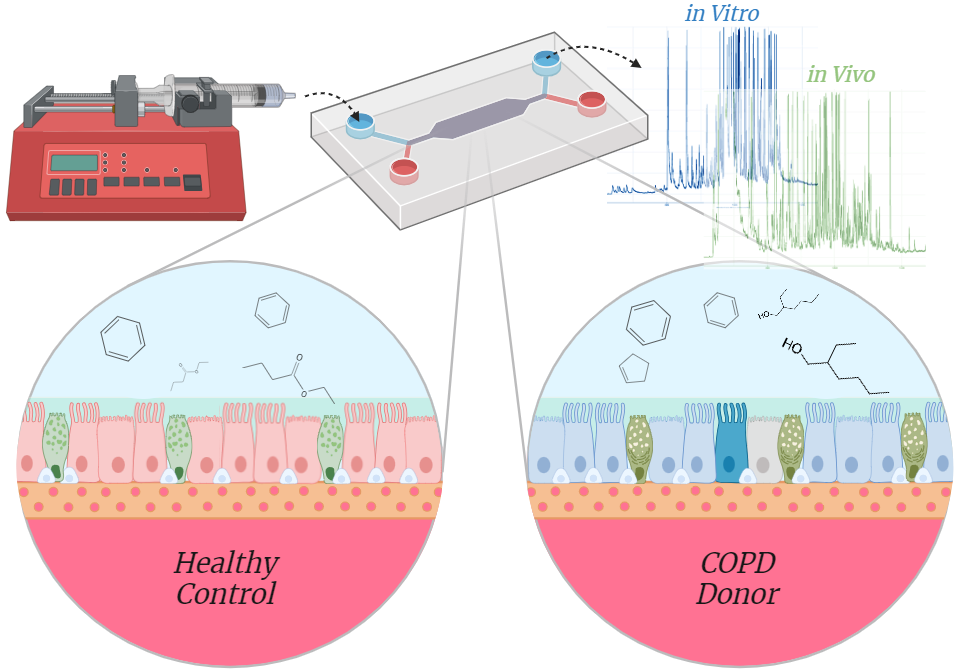Abstract
Breathomics, the study of exhaled volatile organic compounds (VOCs), can be used to identify non-invasive biomarkers for lung damage and disease, such as Chronic Obstructive Pulmonary Disease (COPD). Despite the clinical implications, little is understood about how the VOCs relate to cellular metabolism. In this study we explored how primary bronchial epithelial VOCs release in our Airway-on-Chip (AoC) device relate to the VOCs from the same donors breath.
Primary epithelial cells isolated from bronchial brushes of ex-smoking COPD and healthy donors were cultured and differentiated in gas-tight AoCs. The VOC samples were extracted from the air chamber, analysed by gas-chromatography mass-spectrometry (GSMS), and compared to VOCs from the same donors breath.
The in vitro VOCs overlapped with matched patients in vivo sample. The spectra of COPD derived breath samples displayed increased intensity and diversity of volatiles compared to controls, which was recapitulated in vitro. 2-ethyl-1-hexanol, previously associated with COPD in vivo, was identified in all COPD donors both in vitro and in vivo but not in healthy controls.
In conclusion, VOCs released from cultured bronchial epithelial cells closely recapitulate the complexity and intensity of the total breath. Additionally, we have identified a potential epithelial-derived, COPD specific VOC biomarker, 2-ethyl-1-hexanol.

Fig 1: In Vitro VOC extraction experimental setup.